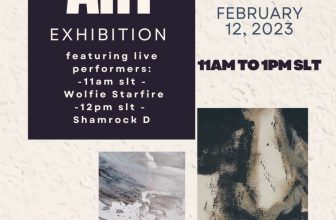
Art Rising
Perspectives from The Artist’s Road

Lunar Codex Boarding Pass from the first Orion Launch 2022
One of my favorite cartoons in the New Yorker magazine is an image of a lunar rover up on concrete blocks, and in the near distance, little moon-men running off with the tires! Perhaps someday, far in the future, traffic between the earth and moon colonies will be an everyday thing, and lunar residents will travel around, not to strip parts, but to visit and take selfies of the multitudes of robotic rovers and landers that are being sent there in our lifetimes.
For the moment, we are quite excited by some of the current science traffic which is carrying, on seven separate missions, Lunar Codexes, or libraries, of representative examples of some of the art being created in our time. They are named the Orion, Peregrine, Nova, Serenity, Minerva, Polaris and Freya Collections.
The first art to arrive on the moon did so in 1969 without the permission or knowledge of NASA—a subversive move by six of the leading artists of that time, including Andy Warhol and Robert Rauschenberg. “Allegedly”, an engineer hid a stamp-sized etched tile of the six artworks, dubbed the “Moon Museum”, on a leg of a lunar module. Sounds like an intriguing destination trip for future tourists. In 2024, the Nova-C Lunar Lander placed 125 miniature stainless steel sculptures by Jeff Koons near the moon’s south pole, the first authorized art on the moon, quite a find for a future explorer!
Samuel Peralta, the founder of the Codex project, sees the Lunar Codex as ”a message-in-a-bottle to the future travelers who find these time capsules, so that they might discover some of the richness of our world today”. It is the very epitome of a lofty goal, indeed. The Codex represents countries and territories from Europe, Africa, Latin America and the Caribbean, North America, Canada, Oceania, Asia, the Middle East and Antarctica. In the U.S., artists from all 50 states, 3 districts and territories are represented. Over 40,000 artists in all. Artists are not charged for inclusion in the Codex. Artists were curated for inclusion by professional curators and gallerists.


The Lunar Codex archives are preserved using a variety of the latest cutting-edge technologies. Stills and images of my own art, which are part of a video interview and oil painting demonstration for the Australian Colour in Your Life television series, are, at this moment, traveling toward the moon on the Serenity mission headed to Mare Crisium. They are archived on what is called a stacked analog-digital storage system. Alternating layers of nickel shielding, NanoFiche memory discs and digital flash memory optimizes archival memory and longevity. Those are protected in what is called a “DHL MoonBox”, which is bolted to the frame of the lander. Later, scheduled for November launch, the Polaris lander (including all the Colour in Your Life videos) will set down in the Nobile Crater, near the lunar south pole. It is hoped that all the seven archives placed around the moon will last for many thousands of years on the airless lunar surface.
See more at the Lunar Codex website.
See the Colour in Your Life segment featuring John Hulsey’s work that is included in the Lunar Codex here.
Copyright Hulsey Trusty Designs, L.L.C. (except where noted). All rights reserved.







